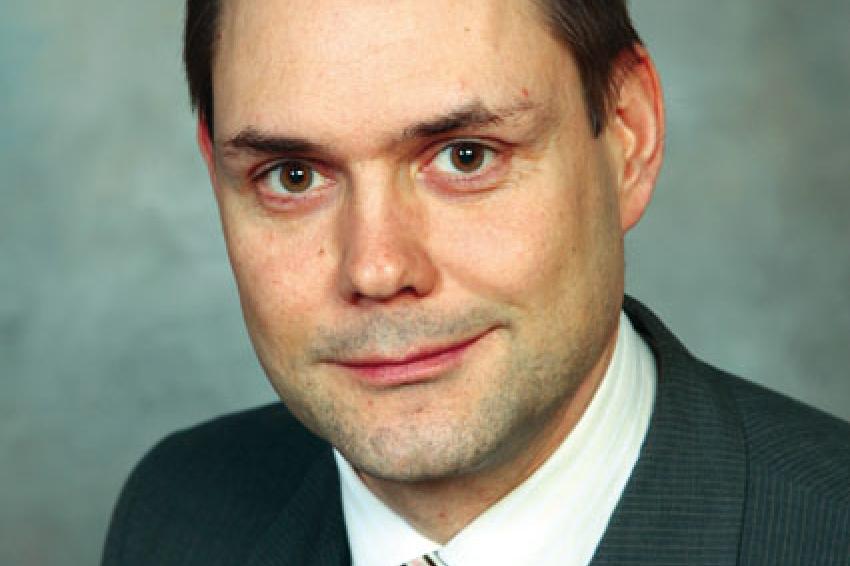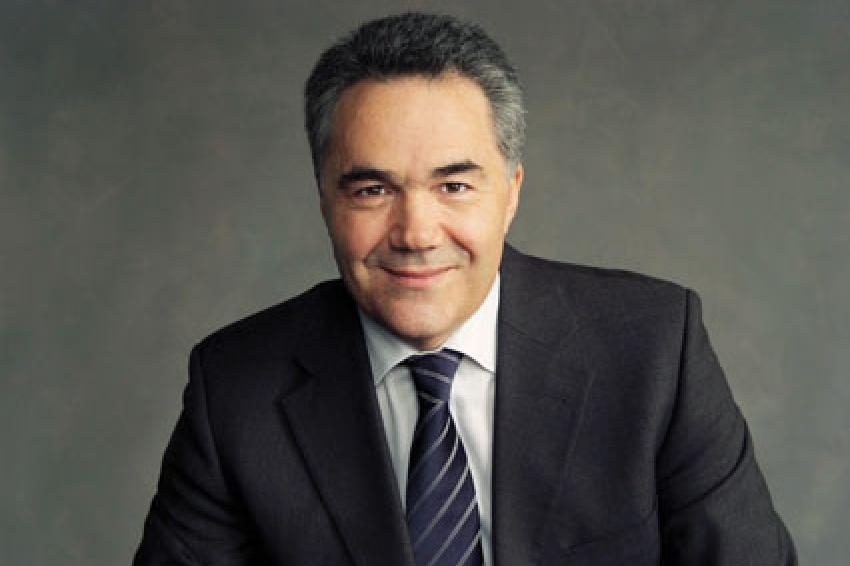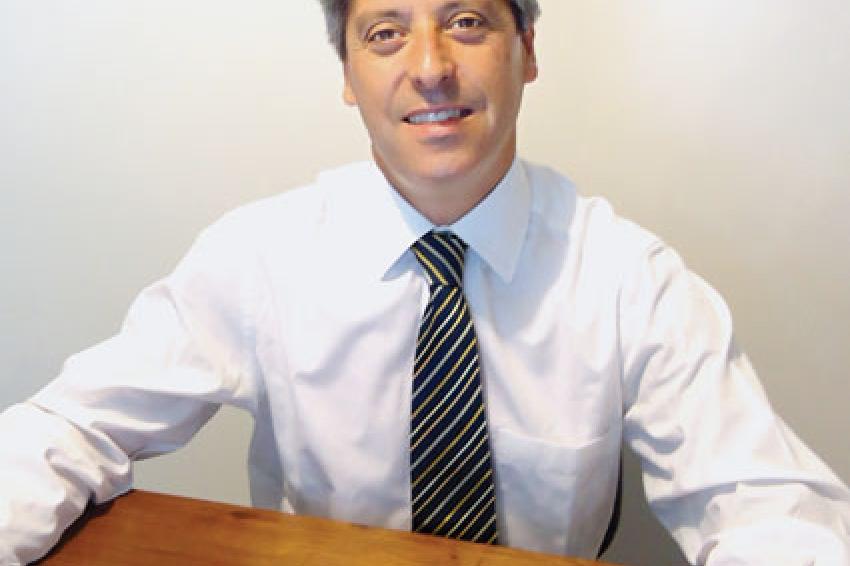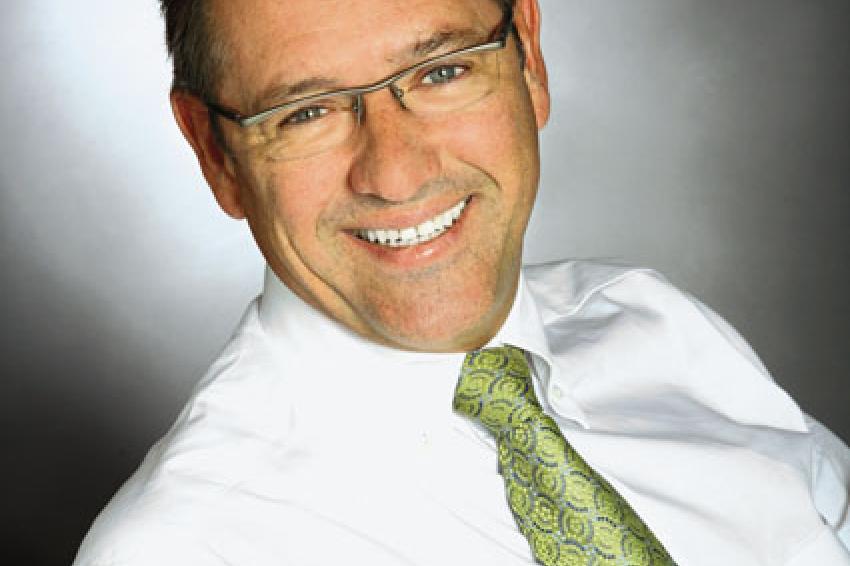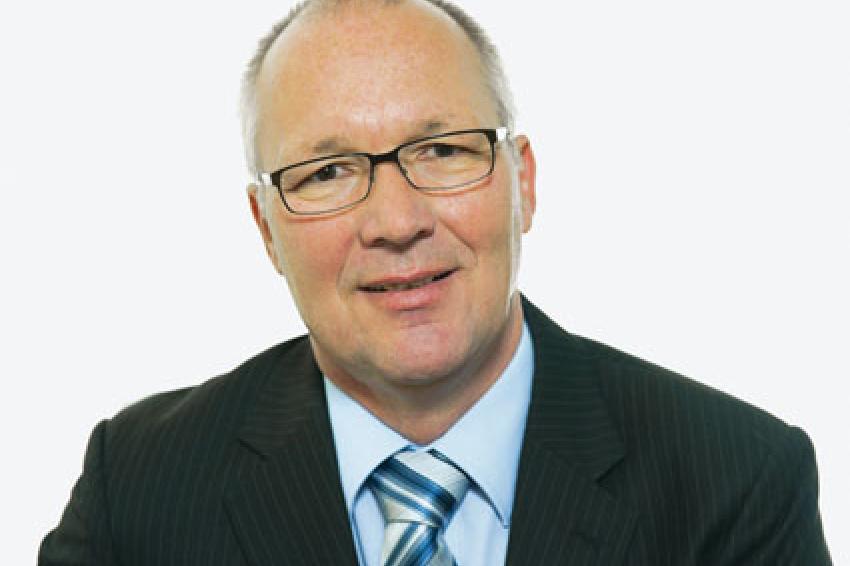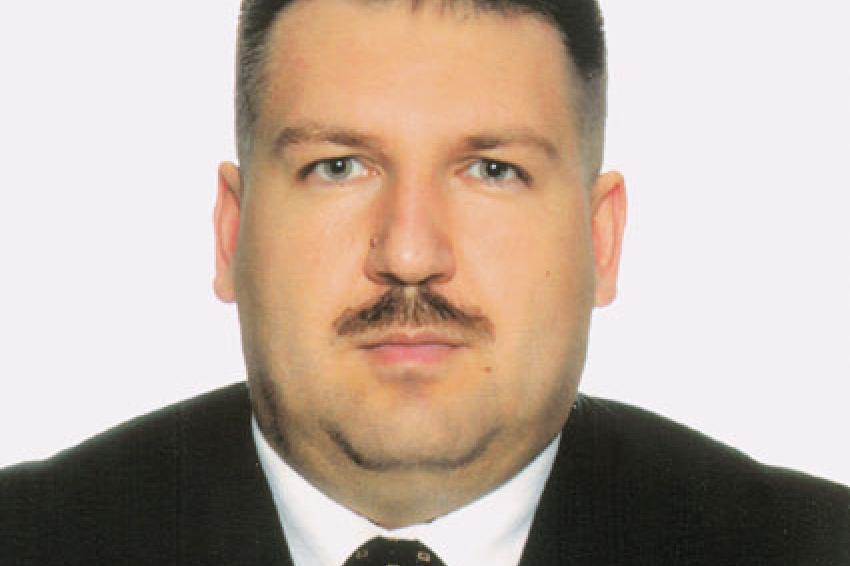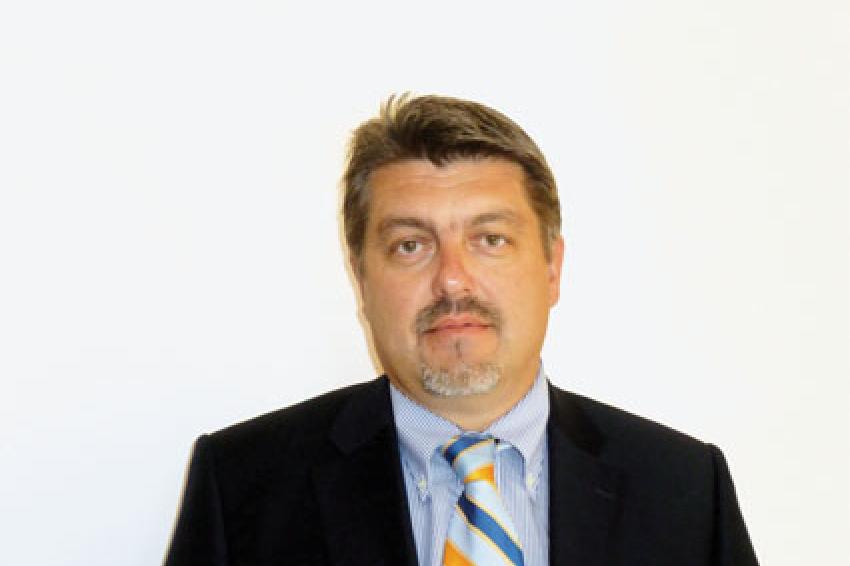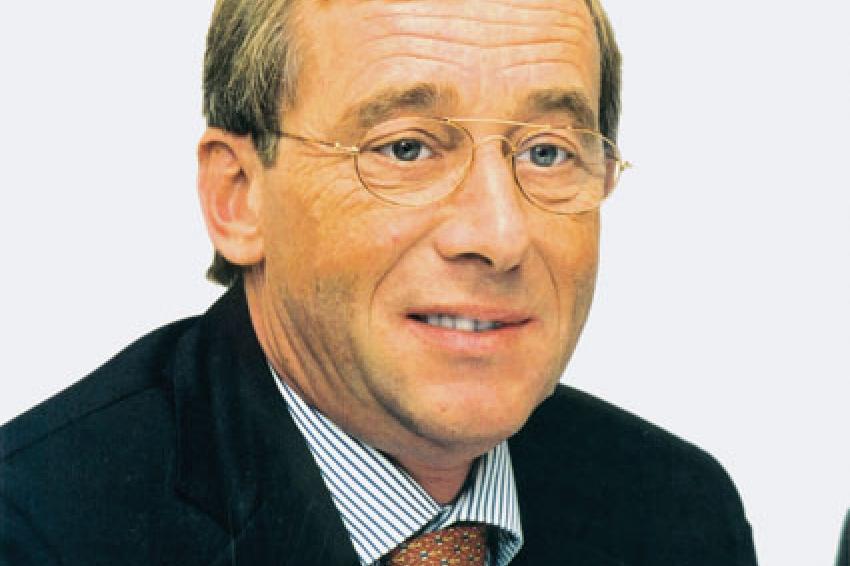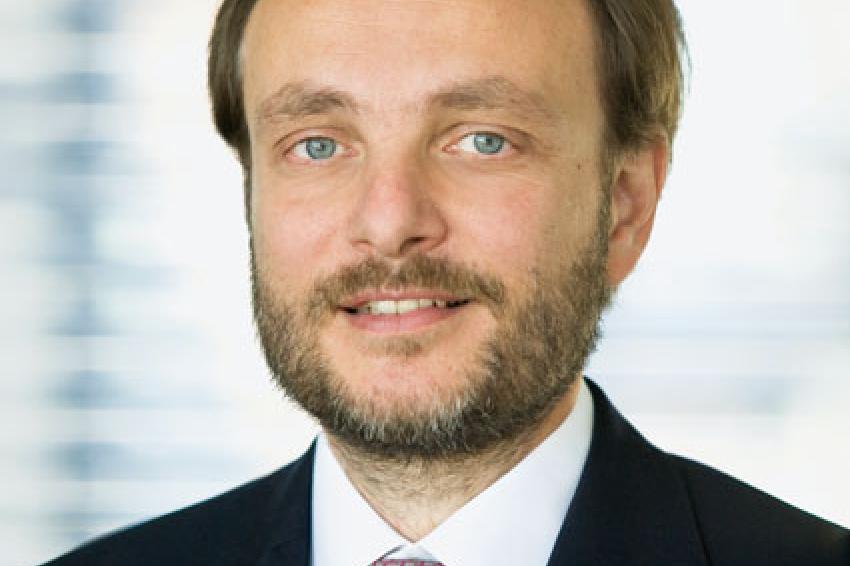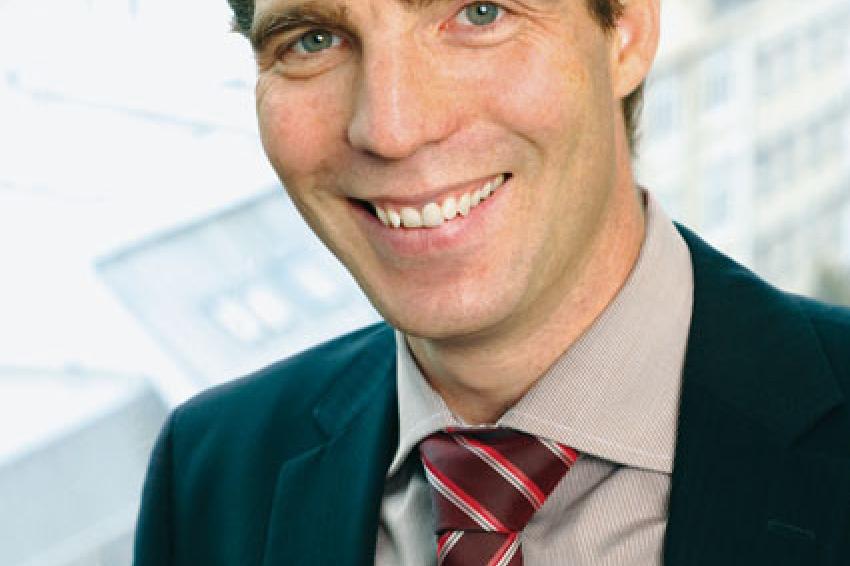Fecc Member Companies Poised for Growth
Healthy Ambitions Serve as ‘Catalyst for Growth’
Catalyst for Growth - With the chemical industry posting phenomenal Q1 numbers, it's clear that the worst of the economic crisis is over. The same goes for chemical distributors in Europe, who will be gathering in Vienna June 6-8 for the annual European Association of Chemical Distributors (FECC) congress. This year's motto, "Turning challenges into opportunity" sums up the strategy many FECC-member companies employed when the going got rough.
Brandi Schuster asked the leaders of several FECC member companies about the lessons they learned from the downturn; their take on continuing consolidation within chemical distribution; and the trends that will shape the market over the next 12 months.
CHEManager Europe: What have been the most significant developments/changes within the chemical distribution industry since the economic downturn? What lessons have been learned and adapted for your business?
Mikko Teittinen (Bang & Bonsomer Group): The economic downturn didn't really change the rules of the game. Many companies made losses but still had a good cash flow during the downturn. Now companies are enjoying of increasing profit and growth, but are struggling to finance the growth. But, the business is the same.
Pavel Kratochvil (Barentz): The most significant changes within the chemical distribution have been the exact following or copying of all changes in the chemical industry as well as changes in consumer behavior. Consumer behavior has been dominated by uncertainty with regard to the future and future economic developments. Often, the decrease of consumption has led to the slowdown of project development, concerns about the future, deployments, destocking and all known effects as fear and concerns. In some cases this has been caused by facts and reality, but sometimes the behavior was more or less a matter of copying others.
Therefore, slow down of consumption has been followed by slow down of production, followed by cost reduction - or at least cost awareness. At least this point was very positive, and we have learned a lot from this. It forced us to look in the mirror and see where and what we can do much more efficiently, practically and in short in many cases we came back to the original roots - to make business simple. This goes for production companies, distributors and even for our private lives.
Steve Holland (Brenntag): The single biggest impact on the chemical distribution industry during this difficult economic climate was the drop in demand, which is only now starting to recover in many industries to pre 2008/09 levels. Chemical distribution was not as heavily affected in terms of volume, which demonstrates the resilient characteristics and need for products and services provided by the chemical distribution industry.
Since then, we see moderately improving macro-economic conditions in advanced markets and a stronger economic performance in emerging markets.
We expect an increasing global demand for products and distribution provided by the large chemical distributors as customers demand even more complex value-added services. We do not depend on single procurement channels, allowing us greater diversity and leverage in the marketplace. This model has allowed Brenntag to help our suppliers and customers to offset the negative effects of the economy by creating a more efficient distribution system.
Carl Hugo Erbslöh (C.H. Erbslöh): What the economic crisis has taught us is that a relatively small event such as the collapse of a bank in America can trigger around the world. This phenomenon will not change in future. We have to be prepared at all costs to have sufficient reserves of our own to tide us over such crises in future, even those of longer duration.
José António Magalhães (Quimitécnica): The economic downturn had increased the need for flexibility and for sharing risks both at the customers and at the producer interfaces. In that sense, the role of the chemical distributor was enhanced as an active partner for both customers and suppliers. Chemical producers increased their interest in partnering with distributors for all the non- strategic accounts to optimize their marketing costs and credit risk. Also, end users are also more interested having services tailored to their needs concerning time, quantity, quality and commercial terms.
We are always learning in our business, so instead of talking about lessons learned, I prefer to point out two recommendations: maintain a strong balance sheet and operate with a diverse portfolio and in the widest geography economically viable. Cash management is critical, and it is wise not use big leverages. Diversity and flexibility are a way of defense and survival.
Peter Skou (R2 Group): It is clear that the financial crisis had a severe impact on the chemical industry. We at R2 Group have of course also felt this impact; however, fortunately, our business is divided into four key areas: chemicals, agro, consumer and pharmaceuticals, and most of our ingredients go into daily life products.
The major impact for us was the fact that clients requested just-in-time deliveries; purchased smaller volumes more frequently; and were very demanding on payment terms. What we have learned from the crisis is the importance of cash flow management and the balance between orders and stocks.
Christian Westphal (TER Group): The most significant development since the downturn was the surprisingly strong business activity, which cranked the upturn. The dimension of raw material price increase after the crisis of 2009 was unforeseen by most market participants. In most cases, demand is still high and in excess of supply. In contrast to conditions of previous generation's worldwide economies, asset categories and risk exposures are interlinked nowadays. In this context, isolated markets are a thing of the past.
Globalization will continue. We expect that a continuation of price and currency fluctuations will take place. In the future we furthermore expect the soft curves of accustomed standard-business -cycles to be interrupted by a repetition of harsh turbulences. Markets should be treated with respect and caution is imperative. Close relation and intense dialog with manufacturers and suppliers is key to consulting our customers on their purchasing strategies. The importance of companies active in the trading and distribution of chemical products has increased as a consequence of the changed market conditions.
François Minec (Velox): The downturn has not affected all companies the same way. Sectors particularly affected were construction and automotive, but pharma, medical, cosmetics and food were barely affected. During the downturn, most companies have increased their controls on costs and stocks in order to limit cash usage.
However, most companies have chosen to keep investing in their core assets and most of all in finding and retaining well-qualified staff. Thanks to this, in our view, the rebound is particularly favorable for most of the chemical distribution industry.
Birger Kuck (Biesterfeld): The economic downturn in 2009 forced European chemical distributors to focus on their strengths in order to be cost conscious, to optimize their cost structure and, above all, to do their day-to-day business with a long-term focus. This means that it has been right to improve the quality of the employees further in spite of the crisis and to provide sufficient manpower to be ready for the time after the economic recovery.
Our company expanded its activities in niche markets further with a strong focus on specialty products and their applications. An improvement of the service is a strong support for customers and suppliers, especially in difficult times. It helps them to resist the crisis better and to be ready for the time after it. These are some lessons we learned. Furthermore, we learned that "cash is king" in times of crisis. It is important for the financial policy of the distributor to act accordingly - not only during crisis but especially in times of prosperity, too.
Alexander Ivlev (Ruskhimset): The chemical industry is conservative and new trends have been forming over the years. Chemical distribution is a reflection and continuation of these trends, but in our opinion, distribution is leading. The healthy shake-up of the economic downturn generated an updated system of relationships between the chemical industry and the chemical distribution.
For our young company, the crisis has opened many doors that were previously closed to us. Energy and healthy ambitions together with already accumulated experience have served as a catalyst for dynamic growth. We cannot say that we did not recognize the challenges for the development of new areas before the crisis, but their real effective realization became possible thanks to the crisis. A lot of chemical manufacturers have revised their approaches to the supply chain in favor of new small and vigorous distributors.
Peter Manshausen (Caldic): The economic downturn in the end of 2008 came suddenly, hitting small- to medium-sized companies hardest. General industries such as construction, chemicals, steel, automobiles, tires producers, etc. found themselves in a situation of almost collapsing demand and rapidly dropping prices. Thus chemicals distributors specialized on these "suffering" industries - particularly those who had quite substantial quantities of raw materials on stock - were severely hit. In contrast, consumer industries such as food, feed, health care and cosmetics weren't affected at all or even faced higher demands.
All players servicing these industries were in a more favorable situation during that period. Consequently, focusing on working capital reduction - particularly in times of "rough seas" - and strengthening specialty chemicals business with added-value services were the first goals in and after the downturn phase. Furthermore, it is necessary to reconsider the traditional business models in order to further grow in line with megatrends such as water, food and convenience products.
The gap between the three largest players and everyone else within chemical distribution is quite significant; how significant are mergers and acquisition and alliances among the small to mid-sized players on the field? What role do you see private equity companies playing?
Mikko Teittinen (Bang & Bonsomer Group): In the chemical distribution business, there is still space for the technically skilled, small family companies who are specialized to work in some specific customer segment or product area. Many specialty raw materials manufacturers don't want to work with large multinational companies. There is also room for the companies who have strong local presence in some geographical area. Consolidation will continue in the chemical distribution industry, and we will see many acquisitions and mergers also in the future.
Pavel Kratochvil (Barentz): The gap between the three largest players and everyone else within chemical distribution is indeed significant. It is significant in the size of the business, in the revenue, global coverage and other parameters, but one can question if we are not comparing apples with oranges. In the current worldwide economic recovery, we can see increased appetite of the huge chemical companies for investments, and owners of the three biggest distributors striving for further acquisition. This is driven by pure financial criteria, meaning showing either growth of shares on the stock exchange or showing expected return on invested capital.
Medium-sized distributors, often still family owned, have different roles and ambitions, such as being a long term global partner for their principals and strengthening their position while making a profit out of it. We haven't seen a lot of mergers, acquisition or other alliances among these medium-sized distributors yet, but some of them shall step out and will become visible very soon. The real smallest ones, particularly real local ones, will hardly survive and stay alone, unless they are very specialized or even niche in the certain segments or region.
Steve Holland (Brenntag): An estimate of our current market share is just under of 7% globally, and the market remains highly fragmented. While we have certain advantages as a larger distributor, we also firmly recognize this is a local business.We believe that the ongoing consolidation process will continue through more and more mergers and acquisitions. Also, Brenntag will continue to grow both organically and through acquisitions. We want to get access to more countries, offer additional products, increase our knowledge and decrease costs. In addition we continue to actively realize the potential offered by the trend for chemical producers to outsource activities.
The chemical distribution market is obviously an attractive field for private equity investors, if we take into consideration the recent developments at Ashland Distribution, which was bought by TPG Capital, or Univar, which is held by funds managed by CVC Capital Partners and Clayton, Dubilier, & Rice.
Or take Brenntag, which received its second private equity investor in 2006, BC Partners, after Bain Capital. Brenntag's history and market presence show that its strong business model developed very well under the ownership of financial investors. Another measure of Brenntag's success under financial investors is the successful IPO in March 2011, with an outstanding share price development since then and a free float of almost 64% today.
Carl Hugo Erbslöh (C.H. Erbslöh): Of course the gap between the three giants and the rest of the chemicals distributors is widening. This is no different from the picture in any other industry. This trend will continue, and the gap will increase. There is still enough room for middle-sized companies; if we analyze the markets accurately and position ourselves well, we will grow. It's not absolutely essential to be number one!
José António Magalhães (Quimitécnica): Chemical distribution is low-value added, has low-capital intensity and a highly flexible industry - so it is a low-risk sector, but also one where size does really matter. The fast and successful consolidation performed by the big three or four players in the last decade has proved it. In the past, M&A moves were fueled by a financial market situation that is not anymore available - especially to SMEs.
This means that transactions at this end have to be very carefully considered, and the motivation should be to increase the geographic coverage or portfolio diversity and strong synergies as enablers of the deal. The private equity owners are still pursuing buy and build strategies, however with a sharper focus and selectivity in the acquisition side and, despite one success exit by IPO, with secondary and tertiary transactions as the exit rule.
Peter Skou (R2 Group): There is no doubt that private equity companies are here to stay. From a medium-sized distributor/producer's point of view, they are welcomed in the distribution market. The three or four largest players have a factor of power that is very significant, but we are quite confident that there is also room for medium sized players like ourselves, and in some areas maybe we can act a little quicker to changes than the big multinationals.
We have deep respect for our colleagues in the business, but I must also say quite happy with our own performance in the different geographic and segmented areas that we are in.
Christian Westphal (TER Group): We will see both a rising level of mergers and acquisitions among the small to mid-sized players, as well as a higher level of alliances to cooperate internationally. Private-equity financed distributors will continue to play the role of the geographically widespread player for the chemical commodity industry. We expect investments in Asia, in particular China, to be a focal point for private-equity driven growth.
François Minec (Velox): Medium-sized and smaller companies are less active in mergers and acquisitions. They typically focus on organic growth, which allows them to develop a strong company culture and retain full control over how and where they grow. So typically, larger companies with more than €250 million in sales are active in M&A. However, today there is a common understanding that the European chemicals market currently over-fragmented and that some consolidation is needed to face the challenges of the chemical distribution industry here, such as low growth in the EU; regulations; consolidation of chemical producers, etc.
Birger Kuck (Biesterfeld): With a turnover of €835 million, Biesterfeld is not one of the three largest players but ranks among the top 10. It should go without saying that the quality and service level of a distributor is not governed by its size. Nearly all large chemical distributors have a strong focus on the industrial chemical market segment, but not Biesterfeld. We concentrate our activities on specialty and niche markets. When pursuing this strategy, acquisitions are a tool to complement the product portfolio and to buy know-how for new market segments.
Private equity companies are usually interested in buying larger companies to follow their own buy and build strategy. All other targets are subordinated. For mid-sized companies, acquisitions are a vehicle for diversification, for complementing their activities and for expanding their geographic presence. By doing so the distributor improves his value and service quality for customers and principals.
Alexander Ivlev (Ruskhimset): In addition to industrial giants, there are a number of sufficiently large universal chemical distributors in Europe and the U.S. This is the second tier that has rather good prospects for further expansion. We find it difficult to judge the potential of mergers and alliances among small distributors in Europe because there are differences in attitudes, business culture and personal ambition. Nevertheless, we believe the emergence of one or two large companies to be logical.
Time of alliances and acquisitions has not come yet to Russia. Within 10 years, the leading players will be indentified, and they will determine the further development of the industry and will actively absorb "niche" companies. At this stage, private equity companies could play an important role in formation of the one to three largest distributors in Russia and the Commonwealth of Independent States.
Peter Manshausen (Caldic): The chemical distribution industry is very much diversified. There are numerous financially healthy, privately owned medium-sized players locally distributing chemicals and specializing in niche markets. All of them are facing increasing competition from the few large players, who - because of economy of scale and geographic extension - are covering an almost complete area of products and regions.
Alliances between the players in the chemicals distribution industry are quite difficult because of antitrust laws and therefore mostly limited to procurement processes.
Thus all players, even the big ones, are facing an increasing need to grow through acquisitions in order to defend themselves from low-cost suppliers in emerging markets and in order to get closer to customers. Private equity companies who noticed the fragmentation of the chemicals distribution market are keen on looking for chemicals distributors to acquire and grow, which all in all results in higher multiples for the few companies left for sale.
What do you think the top three trends will be in chemical distribution over the next 12 months?
Mikko Teittinen (Bang & Bonsomer Group): Companies will begin to focus more on strategies; will devise business concepts for competitiveness; and will continue to improve effectiveness.
Pavel Kratochvil (Barentz): Mergers among the biggest chemical producers will create big and strong groups, affecting the way they select their distributors. They will require pan-European and non conflicting distributors.
The organic growth of top distributors certainly has its own limits, following stronger or weaker economic growth. Therefore the biggest growth model needs to come through acquisitions. This will, however, create at the same time more and more conflicts of interests for the principals.
Barentz strongly believes in a non-conflict of interests and consequently foresees a lot of new opportunities due to this dangerous growth policy of the top big three to five player.
Medium-sized distributors will grow by smaller acquisitions, alliances and or joint ventures. Consequently the smallest ones, without any perspective and plans, will disappear.
Steve Holland (Brenntag): The role of the global distributor will continue to grow. As the world shrinks and we gain greater insight to the markets worldwide; chemical producers are looking outside of their current markets more and more. These producers need a link between their products and customers abroad. Brenntag offers this link by being able to think global, but act local with their employees' extensive knowledge of who to target, and how; as well as possessing the infrastructure and logistics required for distribution. In addition, Brenntag offers more value-adding functions such as packaging, labeling, blending, formulating, just in time delivery, and technical support.
Market consolidation and outsourcing will continue, as it is more economical not only for the producers, but also the consumers. Chemical manufacturers will continue to optimize their distribution and marketing cost and outsource small accounts to third party channel providers, or less-than-truckload distributors like ourselves; a process which means less complexity and cost savings for both sides.
Carl Hugo Erbslöh (C.H. Erbslöh): Deliver on time. Keep your promises. Give service.
José António Magalhães (Quimitécnica): Cash management; focus on the more resilient sectors; and geographic and portfolio expansion both by organic and inorganic activities.
Peter Skou (R2 Group): It is always difficult to predict the future and more so when you have to look at the trends. Our markets change so rapidly, but it is also clear that we feel that at least in the northern part of Europe, the crisis seems to be over or on retreat.
A major issue in the coming months will be the continuous rise in the cost of raw materials.
Supply and demand in both the chemical, food and agro industry are not in balance, and there is a sincere need for more material. We predict that we will have a very volatile market situation the next 12 months, but also an increase in business; not only in turnover, but also in volumes.
Christian Westphal (TER Group): Ongoing product shortages, acquisitions, productivity increase by improving processes.
François Minec (Velox): Consolidation of European players; creation of European networks and strategic alliances between those medium and smaller players who manage to remain independent; all European players seeking more actively to access the Eastern European markets
Birger Kuck (Biesterfeld): The increasing importance of mega trend markets like nanotechnology, solar, biotechnology and electronics.
We also expect to see a drifting apart of the distribution of industrial chemicals on one hand and from the specialty chemical distribution on the other.
Quality requirements for sales and technical service people and the market know-how of the distributor will become a further differentiation of the specialty chemical distributor from the industrial chemical one, who is more logistic and product handling oriented. The globalization of the chemical trade will continue so that far away product sources and suppliers will be of even stronger importance for European customers than today.
Alexander Ivlev (Ruskhimset): We believe that year 2011 will be calmer than the stormy years of 2008-2010. We expect to see significant changes in the European chemical industry: The production capacity will be concentrated at few giants and they will tend to establish their own distribution divisions. The producers from the Asia-Pacific region will increase their activity. And the prices for chemical raw materials will grow rapidly as well as the currency imbalances.
Peter Manshausen (Caldic):In a competitive environment such as chemicals distribution it will become more and more essential to generate competitive advantages, creating USPs and thus differentiating from others. We expect to see more marketing efforts and stronger focus on customers' needs in order to identify and focus on market segments that will deliver most profit; change from chemical distribution to customer value generating services in order to offer customers added value; and integration of sustainability into core strategies by focusing on green chemistry and improved energy and materials efficiency, thus reducing carbon footprint in all processes.
This year's Fecc Congress motto is, "Turning Challenge into Opportunity." What does that mean for your company?
Mikko Teittinen (Bang & Bonsomer Group): The market is growing fast again, and there are multiple opportunities to chemical distributors.
Pavel Kratochvil (Barentz): All of the trends within the chemical industry and distribution are indeed one big challenge. But it does not automatically mean that it will be an opportunity for everyone. We have faced a lot of challenges already in the past, and we were able to take advantage of some of them and translated them into opportunities, and we will do so in future as well. But we can only be successful and being a winner at the end if we have a long-term vision and clear and solid plans.
Our vision is to build a healthy, strong and well-prepared company and knowing its realistic position in the market. Our company wants to and will play an important role in translating all these challenges and will be very visible and transparent in all industrial segments we are currently covering.
Steve Holland (Brenntag): Chemical distribution is and always has been both challenging and a world of opportunity. It's a dynamic environment that is both resilient and offers long term sustainable growth. We are already one of the largest companies operating in the market with a global reach.
For us, being global is an achievement but we also want to be world class in everything we do for our customers and channel partners which presents both challenge and opportunity for any company!
Carl Hugo Erbslöh (C.H. Erbslöh): Anyone who can read the trends in the key sectors and keep ahead of them will find great opportunities.
José António Magalhães (Quimitécnica): For us, we are looking at a geographic challenge and are expanding into to Spain and exporting to Africa. Another challenge is our portfolio; we are expanding our activities and products to the water and wastewater treatment; plastics; biotech industries. We are also offering services like warehousing, logistics, blending, etc.
Peter Skou (R2 Group): "Turning challenges into opportunities" is of course very broad, but one of the challenges that could be turned into opportunity is to be on top of all the new legislations including classification and labelling of products, be on top of the price volatility and finding new countries of origin for our raw materials. The growth we see in Asia and in the Eastern part of Europe is also something that has to be turned from challenge to opportunity and one of the means could be like the old saying: If you can´t beat them, join them.
Christian Westphal (TER Group): Challenges of our industry are plenty: managing the complexity outsourced to us from our principals; coping with the burdens of administrative requirements such as Reach; and winning the war for talents. In order to play a leading role in European distribution for the TER Group, it is essential to provide cross-country solutions for world class IT, controlling, communication, marketing and key account management. Performing a leading role in tackling the hurdles of Reach provides an opportunity for us to position ourselves in terms of supplier recognition and customer satisfaction. Highly motivated employees and a family company culture have always been the foundation of TER Hell and the TER Group.
François Minec (Velox): It is our philosophy to take each challenge as an opportunity! In more detail, we are continuing to recruit and develop our staff, as well as looking for opportunities to open new offices in countries where our presence is currently limited.
Birger Kuck (Biesterfeld): New geographical markets as well as business in new industrial segments are challenges for the chemical distributor. These are challenges that offer opportunities if the distributor identifies it and takes a focused approach.
Another challenge is related to the necessary financing of the business and of acquisitions. Especially just in times after a crisis, this is a very special task. Many financial sources, e. g. in the area of mezzanine financing but also for simple credit lines with banks are often no longer available at the used dimension. Here it is important to be innovative and to use the assumed bottlenecks for finding solutions which can easily turn out to be better for the company then that what has been before.
Alexander Ivlev (Ruskhimset): The motto "Turning Challenge into Opportunity" was leading in our activity during the crisis and post-crisis years. We believe that because of the new reality, we have a unique opportunity to become one of the industry leaders in Russia and CIS.
Peter Manshausen (Caldic): The Caldic group, as one of the leading pan- European chemicals distributors is very well-established in most European countries with a wide variety of products and services. Nevertheless, we identified several segments and regions with interesting growth opportunities where we still are not strong enough in terms of regional coverage or product portfolio.
We therefore will further invest in those areas in order to grow organically as well as through M&A activities assuming that the "right" targets will sooner or later become for sale.
Contact
FECC
Rue du Luxembourg 16B
1000 Brussels, Belgium
Belgium
+32 2 6790263
+32 2 6727355

